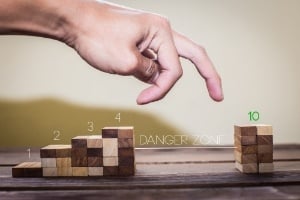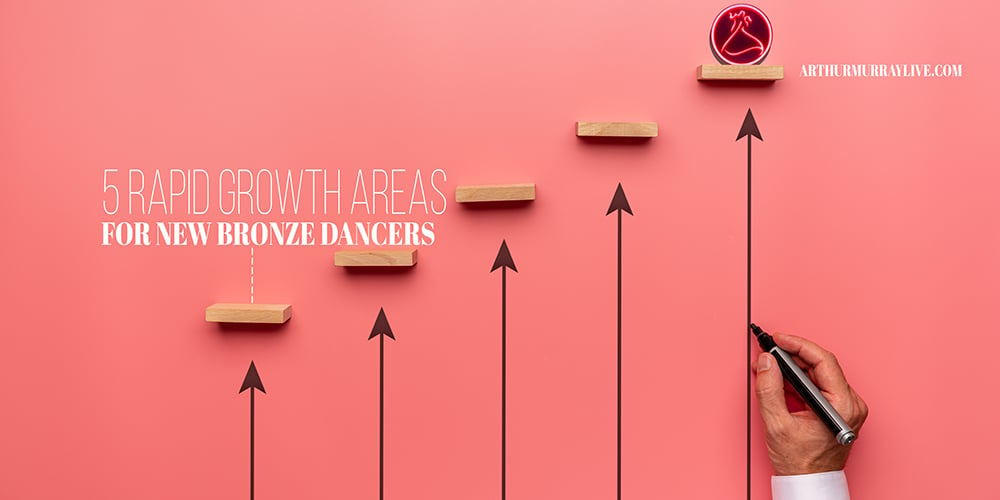
Social Dancing is all about building dance skills to use in a practical social environment. Anytime, anyplace, any music, any dance scene with any partner.
This article is your social dance fitness plan.
Every challenge and dance advice listed will require a little more effort and yield even better results for the practical, dance-anywhere-to-anything dance program you're working on.
Track your progress of your dancing lessons, share it with your friends, turn it into a drinking game - the better you become with the items on this list, the more opportunities you can maximize in your dance life.
21 Challenges To Improve Your Social Dance Skills
1. Talk and Dance At the Same Time
It might be annoying now, but that could just mean you're still in the Awkward Use Stage. We talk more about that in "Dance Progress Explained". Talking while dancing on any dance floor is the secret weapon for moving your skills into the Natural Use stage.
TIP: Practice intentional dance conversations ("how was your weekend?") while dancing 3-5 basics.
2. Attend The Newcomer Group Class
Your dance foundation is like the restoration of the Sistine Chapel - it's under constant improvement. The Newcomer Group Class is loaded with great fundamentals. It's also a great way to practice #1 and just have fun dancing.
TIP: Try working on content from your group class as soon as possible on your private lesson for better retention.
3. Try 90 Minute Appointments
With traffic, work, and everything else life throws at you - dance lessons are great therapy. Once you've depressurized, activated your body, and found your happy place, you may be running out of lesson time. Make faster progress with a 90 minute appointment. This way you get the benefits, and the breakthroughs.
TIP: Read this article to achieve pre-lesson Zen
4. Attend The Practice Party
This is your lab. It's your learner's permit. It's the real life situation in a controlled teaching environment and you need them. Scale it to your level of comfort.
TIP: Try to dance with a few students from the group class in your level first. This way you can practice similar material, build confidence, and then share your findings when you dance with your teacher.
5. Ask Two Different Students To Dance At The Party
One of the most overlooked parts of becoming a great at dancing socially is developing the ability to ask people to dance. This is kind of what makes it "social", and it takes practice. The party to practice it? The practice party.
TIP: Need more dance advice when it comes to practice parties? We recommend reading 10 Tips For Good Dance Party Manners
6. Develop Your Traveling Movements
This is like your first car: A to B, no frills, or stunts. Change steps, the tango basic, and magic step in Foxtrot need to be clear and travel. Your ability to dance laps around a ballroom hinge on these fundamentals.
 7. Develop Your Evasive Action Skills - Layer 1
7. Develop Your Evasive Action Skills - Layer 1
No one wants to run into a wall, or another dancer. Movements like the Magic Left Turn, the Arthur Murray Turn, and the Slow Left Rock turn in Tango will add a new layer to your skills on the dance floor.
8. Develop Your Evasive Action Skills - Layer 2
If Layer 1 (#7) is applying the brakes, then this layer is about downshifting and maneuverability. These moves take a higher degree of skill, but can really highlight your improvement as a leader or follower.
9. Develop Your Style Steps - Layer 1
Promenade movements in all dances allow both the leader and follower to move laterally, and look the same direction. This stylish movement can add sharp changes of direction in the Tango, and smooth transitions in all others. A sign of great dance improvement.
10. Develop Your Style Steps - Layer 2
Underarm turns are some of the first patterns where the leader and follower are not "mirroring" each other (dancing the natural opposite). This can be tricky at first, but helps the developing social dancer showcase their individual roles as leader or follower.
TIP: For more ideas on adding styling, while dancing socially we recommend this article
 11. Break The Frame
11. Break The Frame
If there's one thing that will inhibit your movement, it's your dance frame.
One thing to remember, a dance frame should never replace your movement.
It is styling, and it is important, but a way to make it less taxing on the brain is through a variety of unconventional, but highly effective, dance holds. Utlizing these on your lessons will keep you from having a brain meltdown when you're out dancing.
12. Expand Your Arsenal - Layer 1
Let's say you started your new Arthur Murray Dance Program with six dances: Foxtrot, Waltz, Tango, Rumba, Cha-Cha, and Swing (Also known as "The Six Majors"). Those dances are popular, cover a lot of potential social dancing venues, but can be limiting as you develop.
Here are some ways you can expand your dance program, Layer 1:
- ADD Merengue - The best dance for teaching timing and multitasking.
- ADD Salsa - The Salsa dance scene is consistently popular
- ADD West Coast Swing - Your current swing may not cut it when the music gets slow and bluesy. That's where West Coast Swing shines.
TIP: You can get a clearer picture of what goes into the planning process with - The History Behind an Arthur Murray Dance Program
13. Expand Your Arsenal - Layer 2
At this stage in your social dancing, it's time to start considering the places you may end up using your dance skills. It's important that your Arthur Murray Dance Program reflects that, so you are well prepared when the moment comes.
Here are some ways you can expand your dance program, Layer 2:
- Version 1: Add Merengue, Salsa, and Bachata to improve your Salsa dance experience at a local club
- Version 2: Add Merengue, Hustle, and Nightclub 2-Step to drastically change your versatility at a wedding or office party
- Version 3: Add Foxxy, Argentine Tango, and Bolero if you want to set a romantic mood
- Version 4: Add Samba, Jive, Hustle, and Merengue if you want to fire your personal trainer and get in great shape.
 14. Learn A Routine - Layer 1
14. Learn A Routine - Layer 1
A routine builds muscle memory through scripted repetition, and performances are always optional.
Think of this like classic video game bad guys that are always in the same spot.
The better you know a routine, the easier you can move on auto-pilot. Once you're on auto-pilot, things like Talking While Dancing (#1) and adding Style (#9) are a lot easier.
15. Learn A Routine - Layer 2
A routine, if anything else, is a backup plan. By this point you probably have more than one "sequence" (14). It's time to paste those together into 60 seconds worth of muscle memory developing goodness.
Recommended Routines for Social DancersFoxtrot - Your swiss army knife for just about any social functionRumba - Slow tempo dances give you more time to proces dance technique.Swing - This will be your go-to dance for fast tempo music
 16. Build Your Dance Confidence - Layer 1
16. Build Your Dance Confidence - Layer 1
The idea of becoming a social dancer is to, eventually, do it in public. That last part, can be tricky if you haven't build up the necessary confidence. Here's how to do it:
- Take your Sequence (#14)
- Attend The Practice Party (#4)
- Demonstrate 30 seconds with your teacher
Sure, this will make your heart beat faster, but that is by design.
To Build Confidence, you must challenge it.
17. Build Your Dance Confidence - Layer 2
You've done your first demonstration (#16), so why stop now?
- Take your Routine (#15)
- Attend the Practice Party (#4)
- Demonstrate at least 60 seconds with your teacher
It's important to remember that you're doing this, solely, for building your confidence. If you can perform something in front of a group of supportive Arthur Murray teachers and students, then you're developing the skills to dance in front of your friends and family.
18. Build Your Dance Confidence - Layer 3
It's time to venture out. Repeat steps #16 and #17 as often as you'd like, but this is the step where you change the comfort zone by changing the environment. Attend your first event. We recommend a District Showcase because of the high amounts of minutes you can log on the floor with a group of people.
19. Test Your Dance Confidence - Layer 1
Now it is time to reap the benefits of all the confidence building stages you've tried so far. It's time to attend a Gold Night Out or Holiday Ball. These are special events with dinner, dancing, a beautiful venue, and are built for social dancing. The best thing is there are Arthur Murray students and teachers there to dance with.
20. Test Your Dance Confidence - Layer 2
It's time to venture out to your first outside event - without Arthur Murray teacher supervision. Whether you have a wedding reception on the horizon (there's always one), or you want to win the Office Holiday Party Season - it's time to test it out.
Things To Keep In Mind:
A great leader will stay on the dance floor as long as possible.A great follower should say yes to any polite dance invitation.Don't ever ask your partner for a list of steps they know.
21. Share It!
You've acquired a skill that many people wish they had. In fact, you may have already forgotten the first 3 stages of your dance life. One thing you should never forget, is to invite your friends, family, and co-workers to try a lesson or two themselves. It won't make you dance any worse, and through our new Ambassador Guest Program, it's simple, social, and super easy.
How To Get Started





















